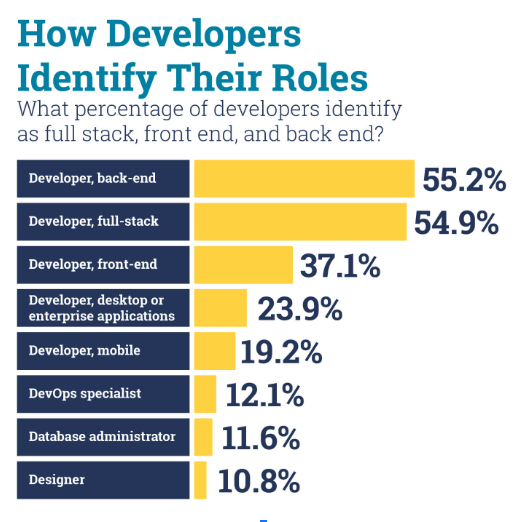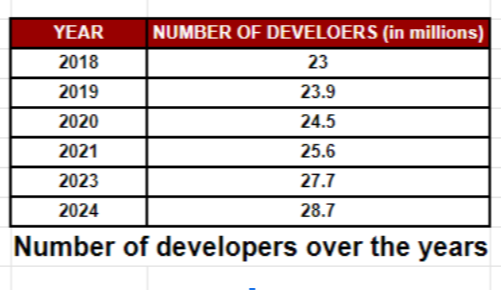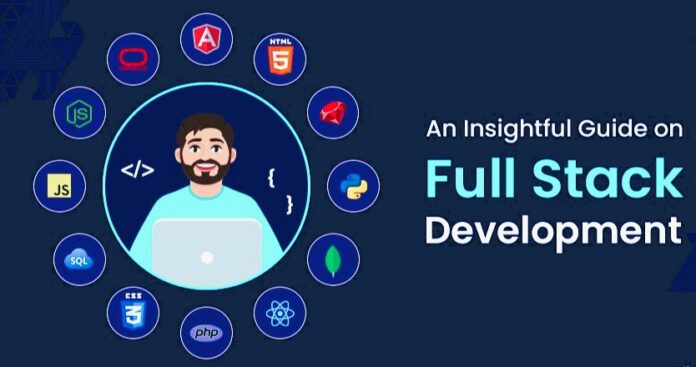Full stack development is a skill that is in demand within the field of web development. It enables developers to proficiently handle both end and back-end tasks. Understanding stack development is crucial for individuals aspiring to pursue a career in web development or looking to hire a stack company. In this blog, we will delve into ten facts about stack development and showcase three successful companies that have leveraged its capabilities for their achievements.
What is Full Stack Development?
Full stack development encompasses the creation of web applications involving both the client side and server side components. A skilled full stack developer possesses a set of abilities, including designing user interfaces, implementing server logic, managing databases and configuring servers. Their expertise allows them to take ownership of the web development process by crafting visually appealing and intuitive interfaces while also building functionalities on the server side that power these web applications.
Full stack developers are professionals who excel at troubleshooting and improving performance throughout the technological infrastructure. Their knowledge and expertise in integrating elements of web development play a role in creating efficient web solutions.
Facts About Full Stack Development
According to a report from LinkedIn the demand for full stack developers has been increasing at a rate of 35% each year since 2015. Here are some important details about full stack development that you should be aware of.
Versatility is the Key

Source: https://bootcamp.learn.utoronto.ca/blog/what-is-a-full-stack-developer/
Full stack development is an approach that equips developers with a range of skills enabling them to contribute to various aspects of a project. These professionals are proficient in programming languages, frameworks and tools which allows them to adapt to the requirements of each project. This adaptability provides businesses with cost savings as they can hire developers who can handle tasks. For example a full stack web development company can build an e-commerce platform by having front end developers create the user interface while back end developers manage the server infrastructure, databases and payment processing systems.
A Blend of Skills
Full stack development is an approach to web development that combines both end and back end technologies. It involves using HTML, CSS and JavaScript as skills along with an understanding of frameworks like React, Angular and Vue.js to create dynamic user interfaces. Moreover developers should have expertise in design to ensure that websites adapt well to screen sizes and devices. On the other hand, it’s crucial to have proficiency in server side programming languages such as Python, Ruby, PHP or Node.js. Additionally, having knowledge of database systems like MySQL, PostgreSQL or MongoDB is also significant.
Developers frequently. Implement APIs to enable communication between the front end and back end components. Additionally having DevOps skills, which encompass using version control systems like Git for development and code management is essential for deployment.
In High Demand
The demand for stack developers is on the rise as businesses increasingly depend on web applications to connect with customers and optimize their operations. Many organizations are seeking the services of a stack web development company to handle their web development projects. For example a startup launching an application can greatly benefit from collaborating with a full stack web development company that provides solutions ranging from designing the user interface to developing the back end infrastructure for user registration and service requests.
Diverse Job Opportunities

Source: https://colorlib.com/wp/web-development-statistics/
There are job opportunities for full stack developers. They can choose to work in sectors like e-commerce, finance, healthcare and entertainment. Additionally full stack developers have the flexibility to work as freelancers or on a contract basis giving them the freedom to take up projects and collaborate with clients. In the United States the average annual salary for a developer is $75,800.
Unique Coding Value
One of the advantages of adopting this software development approach is that it combines two elements of computer programming within a person. Possessing expertise in both domains grants you the freedom to select a job based on factors such as salary or location. In today’s world employers are increasingly in search of website developers who excel in both end and back end development as it allows them to save costs.
Examples
To showcase the real-life uses of stack development, let’s delve into three examples;
Example 1: Online Marketplaces
Online platforms such as Airbnb and Etsy heavily depend on web applications. Full-stack developers play a role in crafting user interfaces that allow individuals to explore listings, make reservations, and handle transactions. They also work on the systems for user authentication and processing transactions.
Example #2: Social Media Platforms
When it comes to social media platforms, like Facebook and Twitter the importance of having web applications cannot be overstated. With millions of users these platforms rely on full stack developers to create user interfaces incorporating real time features, manage databases and address security concerns to protect user information.
Example #3: E-Learning Platforms
For instance e-learning platforms such as Airbnb and Etsy heavily rely on web applications too. Full stack developers in these cases are responsible for designing interfaces that make it easy for users to browse, book services and process payments.
Conclusion
A career in a full stack web development company is highly rewarding. It demands a diverse set of skills as well as a commitment to continuous learning. As technology advances, full stack development remains at the forefront of web development. According to a report by the U.S. Bureau of Labor Statistics there is expected to be a growth in the number of positions for Full Stack Developers with projections indicating an increase from 135,000 to over 853,000 by the year 2024. Being aware of these trends can help individuals make decisions about pursuing a career in stack development.


